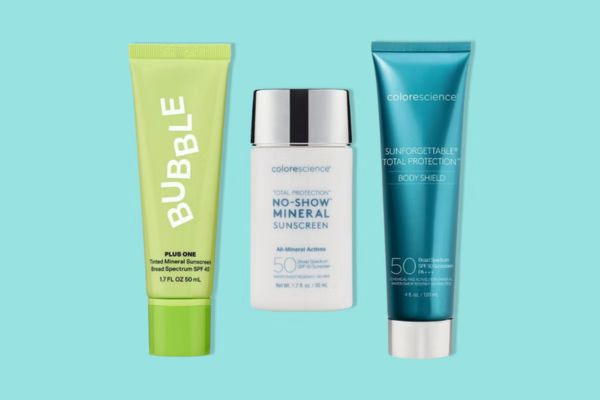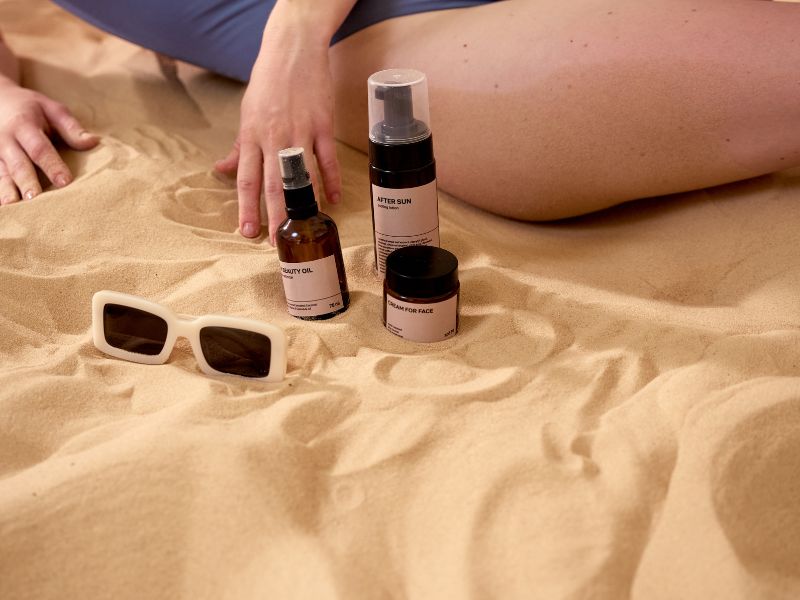How Does Zinc Oxide Work in Sunscreens? Sunscreen is an essential part of modern skincare, acting as a protective barrier against the harmful effects of the sun’s ultraviolet (UV) rays. With a variety of ingredients available, zinc oxide has gained attention as a top choice for safe and effective sun protection. In contrast to chemical sunscreens, zinc oxide offers unique benefits, making it ideal for all skin types, including sensitive skin.
This article will explore how zinc oxide works in sunscreen, its benefits, how it differs from chemical sunscreens, and its effectiveness against UVA and UVB rays. Understanding the mechanism of zinc oxide can help individuals make informed decisions about their sun protection.
How Does Zinc Oxide Work in Sunscreen
Zinc oxide works by forming a protective layer on the skin that reflects, scatters, and absorbs ultraviolet (UV) radiation. This mineral’s molecular structure enables it to shield the skin from the entire spectrum of UV radiation, including both UVA and UVB rays. When applied as sunscreen, zinc oxide acts like tiny mirrors on the skin, deflecting harmful rays away from the surface, which prevents them from penetrating and damaging deeper layers of skin. This unique mechanism sets zinc oxide apart from chemical filters, which absorb UV rays rather than block them.
What Is Zinc Oxide?
Zinc oxide is a naturally occurring mineral commonly used in topical products like sunscreen, diaper creams, and wound care ointments. It is valued for its ability to provide broad-spectrum sun protection and its gentle, non-irritating nature. Unlike chemical sunscreens that absorb UV rays, zinc oxide reflects them, creating a physical barrier on the skin. When formulated in sunscreens, it acts as a shield, protecting the skin from sunburn, premature aging, and skin cancer risks.
UVB and UVA Defense
One of the main advantages of zinc oxide is its broad-spectrum protection. UVB rays cause sunburn and can lead to skin cancer, while UVA rays penetrate deeper, contributing to premature aging and increasing cancer risk. Zinc oxide is effective against both UVB and UVA rays, making it a valuable ingredient in broad-spectrum sunscreens. This dual protection reduces the risk of sunburn, skin damage, and long-term health effects caused by prolonged sun exposure.
Zinc Oxide vs. Chemical Sunscreens
Chemical sunscreens, such as those containing oxybenzone and avobenzone, work by absorbing UV rays and converting them into heat, which is then released from the skin. In contrast, zinc oxide does not absorb UV rays. Instead, it reflects and scatters them, offering a more direct and immediate form of protection. Many people prefer zinc oxide due to its lower risk of causing irritation, sensitivity, or allergic reactions. Additionally, zinc oxide is considered safer for coral reefs and marine life compared to certain chemical sunscreen ingredients.
Benefits of Zinc Oxide for Sensitive Skin
Zinc oxide is highly recommended for individuals with sensitive or reactive skin due to its gentle and non-comedogenic nature. Unlike some chemical ingredients that can cause stinging, redness, or breakouts, zinc oxide is soothing and can even help reduce inflammation. Its natural, non-irritating properties make it a top choice for those with eczema, rosacea, or acne-prone skin, allowing them to benefit from sun protection without compromising skin health.
The Role of Zinc Oxide in Physical (Mineral) Sunscreens
Zinc oxide is classified as a physical, or mineral, sunscreen ingredient. Physical sunscreens create a barrier on top of the skin, reflecting UV radiation away from the body rather than absorbing it. This type of sunscreen is often referred to as “mineral sunscreen” because it utilizes natural minerals like zinc oxide and titanium dioxide. Unlike chemical sunscreens that may require 20-30 minutes to activate, physical sunscreens with zinc oxide work immediately upon application, providing instant protection.
Is Zinc Oxide Safe for the Environment?
Environmental safety has become a significant concern in the choice of sunscreen ingredients. Chemical sunscreens are known to release substances that can harm coral reefs and marine life. Zinc oxide, on the other hand, is considered reef-safe when it’s non-nano, meaning the particles are large enough to avoid absorption by coral reefs. When choosing zinc oxide sunscreen, look for non-nano formulations, as they offer the same sun protection without environmental harm. Many eco-conscious consumers prefer zinc oxide sunscreens to minimize their environmental footprint.
Zinc Oxide and Anti-Inflammatory Properties
Aside from UV protection, zinc oxide is also known for its anti-inflammatory properties. It has been used in products designed to calm irritated skin, such as diaper rash creams and ointments for minor cuts or burns. This anti-inflammatory quality makes it ideal for people with sensitive skin conditions or those who experience skin irritation from other sunscreen ingredients. Zinc oxide can soothe the skin while protecting it from the sun, making it a multifunctional ingredient in skincare.
Choosing the Right Zinc Oxide Sunscreen
Selecting the right zinc oxide sunscreen involves considering factors like formulation, SPF rating, and skin type. Some zinc oxide sunscreens are formulated with added antioxidants or hydrating ingredients, providing extra benefits for the skin. When choosing a zinc oxide sunscreen, look for broad-spectrum protection with an SPF of at least 30 for effective daily sun defense. For people with oily skin, lightweight, matte-finish zinc oxide sunscreens are available, while those with dry skin may prefer moisturizing formulations.
How to Apply Zinc Oxide Sunscreen for Maximum Protection
To maximize the effectiveness of zinc oxide sunscreen, apply it generously and evenly across all exposed skin areas. It’s essential to use enough product to create a visible layer that offers adequate protection. Reapplying every two hours, especially after swimming or sweating, ensures continuous sun defense. Because zinc oxide sunscreen does not penetrate the skin like chemical sunscreens, it may leave a slight white cast. However, tinted options or advanced formulations can reduce this effect, providing a more natural finish while maintaining protection.
Conclusion
Zinc oxide sunscreen is a top choice for effective, gentle, and broad-spectrum sun protection. With its ability to reflect and scatter UV rays, zinc oxide provides immediate and comprehensive coverage, shielding the skin from both UVA and UVB rays. Unlike chemical sunscreens, it offers a non-irritating alternative suitable for all skin types, including sensitive and acne-prone skin. Its environmental safety adds to its appeal to eco-conscious consumers. By understanding how zinc oxide works in sunscreen, individuals can make informed choices that promote skin health, safety, and sustainability.






